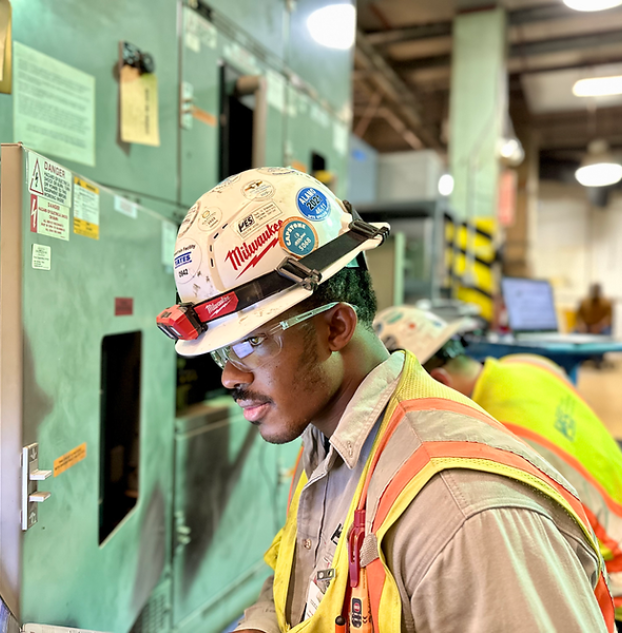Ensure Project Success with Comprehensive Engineering Support: Laying Out Engineer Services, Topographical Surveying, and More
Ensure Project Success with Comprehensive Engineering Support: Laying Out Engineer Services, Topographical Surveying, and More
Blog Article
Making Best Use Of Resource Appropriation With Strategic Evaluating Practices
In the realm of strategic resource appropriation, the method of checking stands as a pivotal tool for companies aiming to enhance their effectiveness and impact. By systematically collecting data and insights, calculated evaluating practices use a roadmap for educated decision-making and source distribution. Through the lens of stakeholder interaction, these surveys supply a method to take advantage of the varied perspectives and needs that shape an organization's landscape. Nevertheless, the real power of critical evaluating exists not simply in information collection, yet in the capacity to change this details right into workable approaches that propel an organization towards its goals. Via this lens, we start to unwind the detailed interaction between surveying practices and resource optimization, establishing the phase for a much deeper exploration of the techniques and strategies that underpin this important process.
Significance of Strategic Surveying Practices
Strategic checking methods play an essential function in figuring out the reliable appropriation of sources within organizations. By conducting tactical surveys, companies can gather important data and insights that aid in making informed decisions concerning the allotment of resources such as manpower, budget plan, and time. These techniques give an organized technique to recognizing the existing state of the company, determining areas for improvement, and aligning resources with tactical objectives.
One key relevance of strategic surveying practices is that they help organizations prioritize their campaigns based on real-time feedback from stakeholders. This makes certain that resources are guided in the direction of jobs or activities that have the highest possible effect on accomplishing business objectives. In addition, tactical surveys make it possible for business to adapt to altering market conditions, consumer choices, and internal capabilities by constantly reviewing and keeping an eye on resource appropriation techniques.
Event Insights From Stakeholders
Including feedback from stakeholders is crucial for organizations implementing strategic evaluating practices to properly designate resources and drive decision-making procedures. Stakeholders, consisting of employees, clients, providers, and area participants, hold important insights that can significantly affect the success of strategic initiatives. setting out engineer services. Engaging with stakeholders through studies, interviews, emphasis teams, and responses sessions allows companies to acquire a deeper understanding of their requirements, problems, and choices
By collecting understandings from stakeholders, companies can recognize key areas for improvement, prioritize resource allotment based on actual needs, and align critical goals with stakeholder expectations. Additionally, involving stakeholders in the decision-making procedure cultivates a sense of possession and dedication, bring about raised buy-in and support for critical initiatives.
Additionally, stakeholders usually offer special viewpoints and innovative ideas that may not have actually been considered internally. By proactively listening to and integrating stakeholder responses, companies can boost their tactical surveying methods, make even more educated choices, and inevitably achieve better results.
Utilizing Data-Driven Approaches
Using data-driven strategies is extremely important for organizations seeking to improve the performance of their resource appropriation techniques and decision-making processes. By leveraging information analytics and progressed innovations, organizations can extract beneficial insights to optimize resource allocation, recognize trends, and make informed choices. Data-driven approaches enable companies to assign sources based on empirical proof rather than intuition, resulting in much more efficient and effective outcomes.

Additionally, organizations can use predictive analytics to anticipate future resource requirements and allot sources proactively. Engineering surveys. By leveraging historic data and fad evaluation, organizations can anticipate need changes and adjust their source allowance techniques accordingly. On the whole, welcoming data-driven methods empowers companies to make knowledgeable decisions that make the most of source allowance effectiveness and drive lasting growth
Identifying Locations for Enhancement
To enhance operational effectiveness and performance, organizations should focus on determining vital locations for renovation through strenuous analysis and assessment. Determining areas for improvement is a crucial action in the process of making the most of resource allowance. By identifying where inefficiencies or bottlenecks exist within the company, decision-makers can route sources towards resolving these particular locations. This targeted approach makes sure that initiatives are concentrated on activities that will certainly produce the best return on financial investment.
One efficient technique for determining locations for enhancement is conducting routine performance examinations throughout various divisions or features. Via these examinations, organizations can gather important insights right into areas that require attention or restructuring. Additionally, seeking feedback from workers whatsoever levels of the organization can provide a distinct perspective on potential areas for improvement.
Moreover, utilizing tools such as process mapping, SWOT analysis, and benchmarking can assist in recognizing locations for enhancement by highlighting staminas, weaknesses, opportunities, and hazards within the company. By systematically examining these aspects, companies can develop a comprehensive understanding of where sources should be alloted to drive performance and performance.
Practical Tips for Application

Verdict
Finally, calculated surveying methods play a critical function in making best use of source allotment by gathering understandings from stakeholders, making use of data-driven strategies, and recognizing locations for improvement. Applying functional ideas for efficient surveying can result in even more educated decision-making and maximized source allotment techniques. By prioritizing calculated surveying methods, organizations can ensure that sources are alloted effectively and efficiently to meet their objectives and purposes.
In the world of calculated resource appropriation, the method of surveying stands as a crucial tool for companies intending to enhance their performance and effect.Strategic surveying techniques play a critical role in establishing the reliable allotment of resources within companies.Incorporating responses from stakeholders is necessary for companies carrying out check over here tactical evaluating methods to effectively allot resources and drive decision-making procedures.Moreover, organizations can use predictive analytics to anticipate future source needs and designate resources proactively. By prioritizing critical checking techniques, companies can make sure that resources are alloted effectively and successfully to satisfy their goals and goals.
Report this page